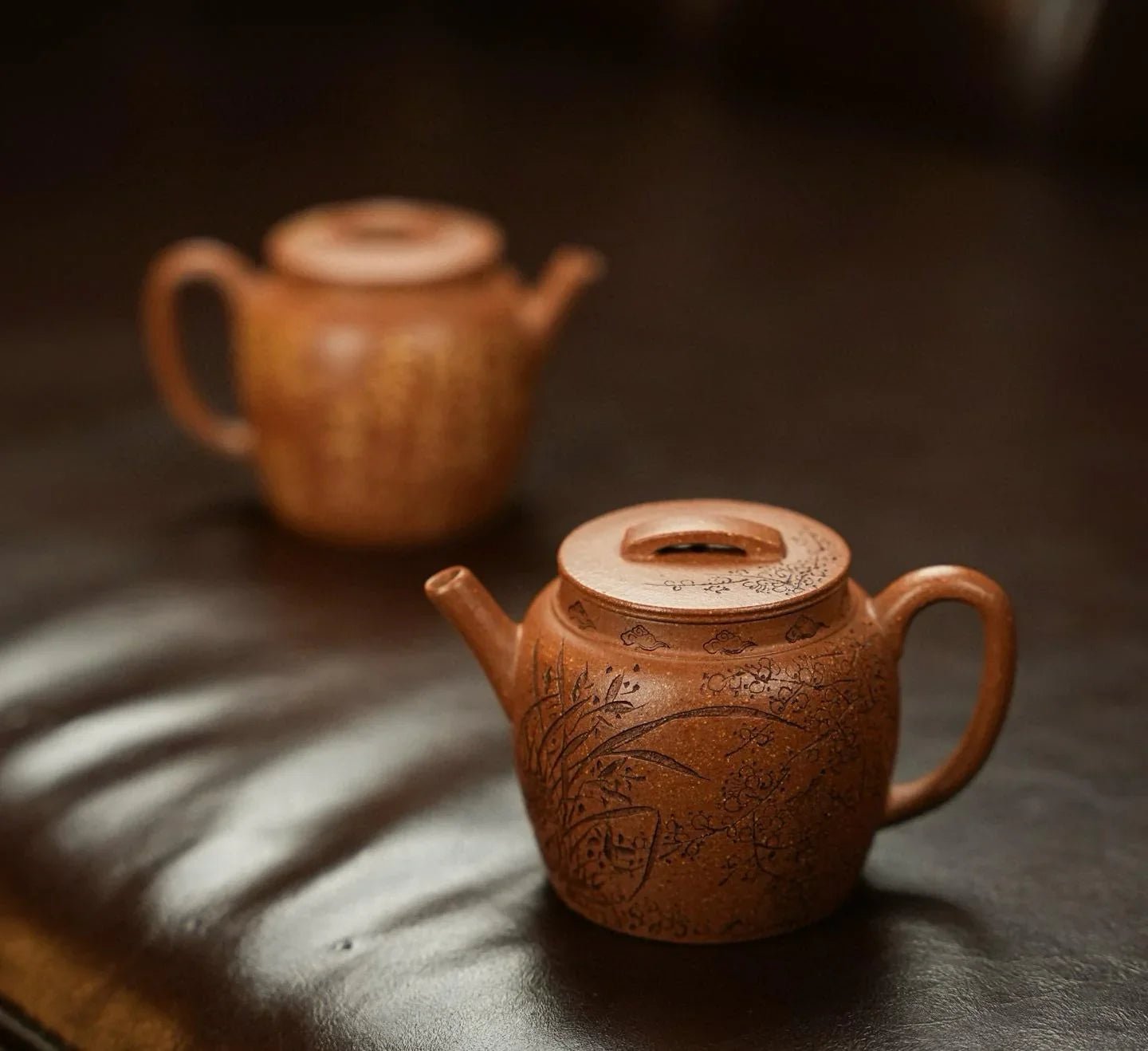Many people only consider the capacity of the teapot when buying a teapot for brewing tea, but ignore the shape of the teapot. However, the fact is that different purple clay teapot shapes have an impact on brewing different types of tea.
When the teapot market in Taiwan was the hottest, teapot merchants once combined standard teapots of different capacities in sequence, and assembled a set of tea sets from one cup teapot to eight cup teapots, which was called "one-stop service". Later, because the practice of using "cup" as the unit of measurement for teapots was not unified, it has always troubled tea drinkers. In recent years, teapot manufacturers have begun to pay attention to using milliliters as the unit of measurement for teapot capacity, and have introduced 100 milliliters, 150 milliliters, and 200 milliliters as the capacity of teapots, so that consumers can make more specific references when buying teapots.

The capacity is determined by the tea drinking habits of the buyer and the number of tea drinkers. The right size is good. The shape of the purple clay teapot affects the taste of the tea. Here are some common shapes to introduce to you:
1. Round teapots are the most practical
Round teapots are the most common and look plain, but they are the teapots that beginners can buy at the most reasonable price.
Tall teapots with small mouths are suitable for brewing fermented tea, but tea that is too high will lose its flavor, such as Pu'er and black tea, which need to be stewed at high temperatures. The purpose of choosing such a teapot is to make the tea aroma sweeter and more mellow;

A short, wide-mouthed pot is suitable for brewing unfermented tea, but if it is too short, the lid will easily overflow. For example, green tea, Tieguanyin, Longjing, Biluochun, etc. can fully display the unique fragrance and refreshing taste of tea at a temperature of about 85 degrees Celsius.

Round teapots are also the best for brewing the aroma of oolong tea.
Oolong tea leaves are in the shape of a curled ball, and a round teapot provides enough space for the hemispherical tea leaves to fully expand. If you love drinking oolong tea, then buying a round teapot is the most practical, because after the round teapot is filled with water, the round wall allows the water to flow in the pot, which can more gently combine the water and tea leaves, which is conducive to the tea brewing.
2. Flat-shaped teapots are best suited to reduce the roasting smell of aged Wuyi tea.
Flat-shaped teapots are suitable for brewing Wuyi tea in a strip shape. The rate of Yixing teapots being made into flat-shaped teapots is relatively low because the sintering success rate (the so-called "finished product rate") of this type of teapot is relatively low.

This kind of pot with a relatively flat body has a full sense of stability, which allows the tea leaves in a string shape to be firmly fixed in the pot and release their fragrance at ease. When pouring water, the water flow is naturally buffered due to the shorter pot wall of the flat pot, and the small space inside the pot makes it easier for the tea leaves to be soaked in the water and gently release their essence. I think that the space in the flat pot cannot be compromised at all, which is where the essence of Wuyi Tea Rock Charm is fully displayed.
3. Square pots are more beautiful than practical

The key to making a square pot is that the clay must be evenly kneaded, otherwise the difficulty and failure rate of joining the pieces will be very high. The internal angle of the square pot makes it difficult for the tea leaves to roll and the water flow is easily blocked, but the square pot is eye-catching in shape and is more beautiful than practical.

